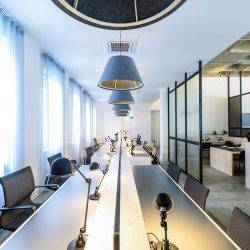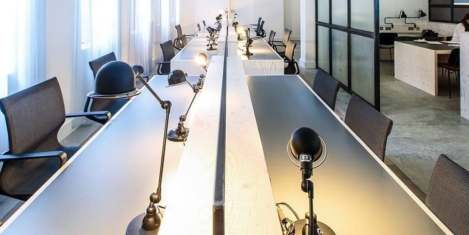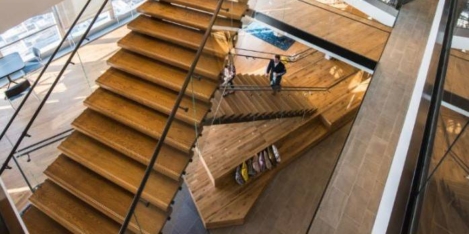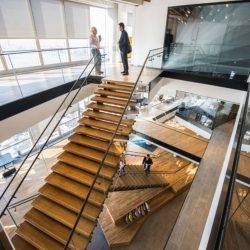February 8, 2017
Take up of flexible space confirms London’s status as a global coworking pioneer 0
 The ‘gig economy’ continues to drive London’s thriving flexible workplace sector which accounted for 8.8 percent of total office take-up in 2016, according to a new study from Cushman & Wakefield. The report claims that the pace of development will continue for the foreseeable future, not least because of the number of corporate occupiers taking on coworking space. Flexible office space accounted for more than 4.5m sq ft of take up in London over the past five years as the capital has cemented its place as the leading global market for coworking, according to the research. In 2016, flexible office take-up amounted to 842,888 sq ft across Central London, representing 8.8 percent of total take-up – slightly above the five-year average of 8.4 percent.
The ‘gig economy’ continues to drive London’s thriving flexible workplace sector which accounted for 8.8 percent of total office take-up in 2016, according to a new study from Cushman & Wakefield. The report claims that the pace of development will continue for the foreseeable future, not least because of the number of corporate occupiers taking on coworking space. Flexible office space accounted for more than 4.5m sq ft of take up in London over the past five years as the capital has cemented its place as the leading global market for coworking, according to the research. In 2016, flexible office take-up amounted to 842,888 sq ft across Central London, representing 8.8 percent of total take-up – slightly above the five-year average of 8.4 percent.







 With the UK facing at best, very slow growth, or even shrinkage, of the working population, future changes to migration levels into the UK due to Brexit could exacerbate the financial stresses and strains caused by the UK’s aging workforce. This is according to the
With the UK facing at best, very slow growth, or even shrinkage, of the working population, future changes to migration levels into the UK due to Brexit could exacerbate the financial stresses and strains caused by the UK’s aging workforce. This is according to the 










 Amos Tversky and Daniel Kahneman introduced the concept of Loss Aversion in 1984, highlighting people’s tendency to strongly prefer avoiding losses to acquiring gains. Most studies suggest that losses are twice as powerful, psychologically, as gains. Lose £100 and we will feel a remorse that easily outweighs winning £100. In a similar fashion we find it very hard to see future positives when confronted with short term loses. We understand easily what we have lost but cannot imagine what there is to be gained. Furthermore, as Frederic Bastiat wrote in an 1850 paper, “That Which is Seen, and That Which is Not Seen”, man has a tendency to “pursue a small present good, which will be followed by a great evil to come, rather than a great good to come, at the risk of a small present evil”. Put these together and it is no wonder that, by and large, the future of work, corporate real estate and the workplace is so widely misunderstood.
Amos Tversky and Daniel Kahneman introduced the concept of Loss Aversion in 1984, highlighting people’s tendency to strongly prefer avoiding losses to acquiring gains. Most studies suggest that losses are twice as powerful, psychologically, as gains. Lose £100 and we will feel a remorse that easily outweighs winning £100. In a similar fashion we find it very hard to see future positives when confronted with short term loses. We understand easily what we have lost but cannot imagine what there is to be gained. Furthermore, as Frederic Bastiat wrote in an 1850 paper, “That Which is Seen, and That Which is Not Seen”, man has a tendency to “pursue a small present good, which will be followed by a great evil to come, rather than a great good to come, at the risk of a small present evil”. Put these together and it is no wonder that, by and large, the future of work, corporate real estate and the workplace is so widely misunderstood.














January 17, 2017
The very idea of a universal workplace is seriously flawed 0
by Kyle Pinto • Comment, Flexible working, Technology, Workplace design
(more…)